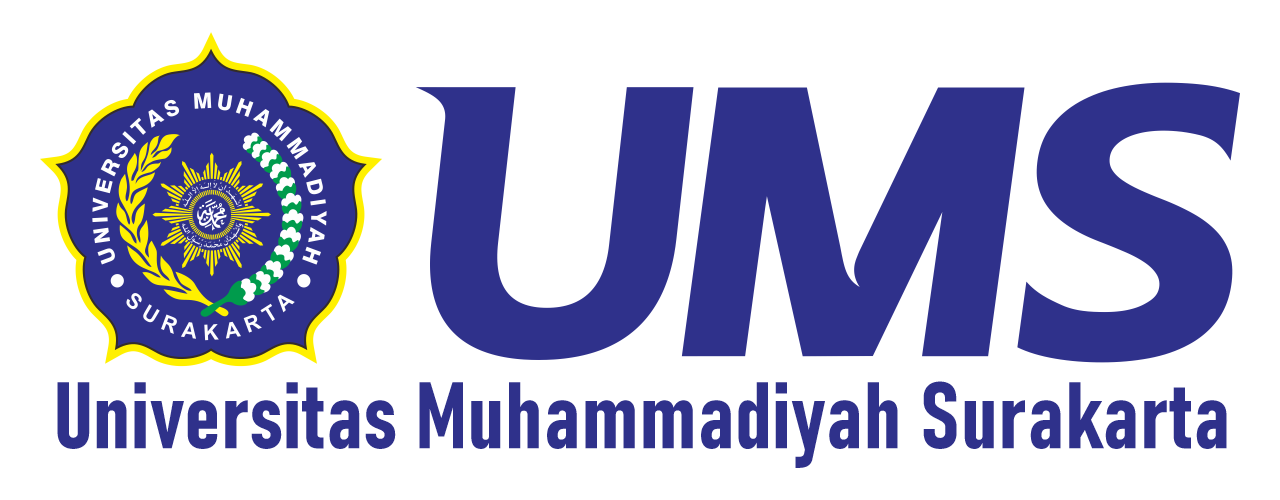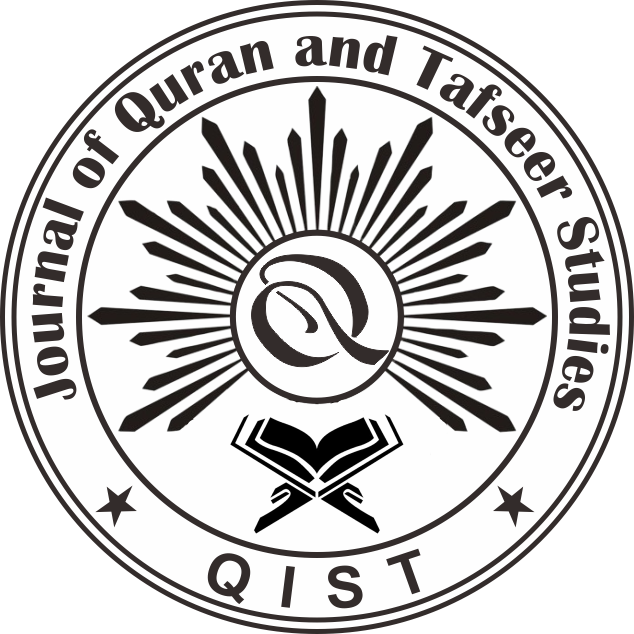THE URGENCY OF SIYAQ (INTERPTRETATION OF THE WORD AL-INS AND BASYAR PERSPECTIVE OF AR-RAGHIB AL-ASHFAHANI) IN KITAB AL-MUFRODAT FI GHARIB AL-QUR'AN
DOI:
https://doi.org/10.23917/qist.v1i3.2221Keywords:
Mutaradif, Basyar and Al-ins, Siyaq LughowiAbstract
Muhammad bin Idris as-Syafi'I said "Arabic has a rich vocabulary that allows mutaradif (synonyms), especially the vocabulary of the Qur'an. Al-Sibawayh said that there are the synonyms in the Qur'an, that dialogue between Arabian and others so many diversity of Arabic vocabulary. The argument is that one Qur'anic memorization does not contain the wisdom of another memorization, while Allah uses different terms for each memorization even though they explicitly have the same meaning. The problem of this research is Abu Hilal Askari said that the synonyms in the Qur'an there are different fundamentals, Also Ar-Raghib al-Asfahani said the difference between synonyms and means are implicit. The aim of this study is to analyze the implicit meaning between the words al-Ins and Basyar from the perspective of ar-Ragihb al-Ashfahani as an indicator that the mutaradif in question is found in the Qur'an so as to display the wisdom of the Qur'an. The methods of this research are qualitative method, using Library Research and inductive approach method. The results of this research are to find the explanation that ar-Raghib al-Asfahani uses the power of Siyaq Lughawi (textual explanation) in interpreting the verses, and placing the means of verses in order of language indicators. The theory of siyaq lughowi is used to analyze Ar-Ragihb al-Ashfahani's tafseer, the word of al-ins that refers to QS. al-Furqon: 49, an-Nisa: 6, and an-Nuur: 27 as the main meaning of interpretation. That verses has implicit means of inner human's characteristics: forgetfulness, calm, obey of command, and social creatures. But to explain the word of Basyar refers to QS. al-Furqon: 54, Shad: 71, al-Mudatsir: 25, al-Qomar: 24, Yasin: 15, al-Mu'minun: 47, al-Kahf: 110, al-An'aam: 50, ali-'Imran: 47, Maryam: 17, and Yusuf: 31. That verses has implicit of physically characteristic of humans: anatomy, biology, and human materials (skin, blood and etc).
References
M. Z. Husain and C. S. Kurniawan, "Al-Siyāq al-Qur'ānī wa Aṣaruhu 'Inda al-Qādī Ibn 'Aṭiyyah fī al-Taujīh al-Nahwī (Dirāsah Tafsīriyyah Nahwiyyah)", J. Adab., vol. 20, no. 1, 2020, doi: 10.24252/jad.v17i120i1a7.
M. Y. Setyawan, "... Teori Kontekstual (Naẓariyyah al-Siyāq) dalam Penelitian Semantik: The Urgency of Contextual Meaning (Dalālah Siyāqiyyah) and Contextual Theory (Naẓariyyah al ...," ... J. Ilmu Bhs. Arab dan Stud. Islam, 2022.
S. M. Munawwarroh and R. Rochmad, "Siyaq Al-Hijrah 'inda Ibn Athiyah fi sKitab al-Muharrar al-Wajiz fi al-Tafsir al-Kitab al-'Aziz," Stud. Quranika, vol. 6, no. 1, 2021, doi: 10.21111/studiquran.v6i1.5481.
M. M. Abdul Haq and M. Munawir, "Konstruksi Asbābun Nuzūl M. Abed Al-Jabiri (Studi Kitab Fahm Al-Qur'ān Al-Hakīm: Al-Tafsīr Al-Wadhih Hasb Al-Nuzūl)," MAGHZA J. Ilmu Al-Qur'an dan Tafsir, vol. 7, no. 1, 2022, doi: 10.24090/maghza.v7i1.6392.
M. Y. Setyawan, "Urgensi Makna Kontekstual (Dalālah Siyāqiyyah) dan Teori Kontekstual (Naẓariyyah al-Siyāq) dalam Penelitian Semantik," Insyirah J. Ilmu Bhs. Arab dan Stud. Islam, vol. 5, no. 1, 2022.
Cutri Tjalau dan Suharia Sarif, "Thariqah al-Ta'lim al-Siyaq al-Lugawiy dalam Pembelajaran Bahasa Arab," Ajamiy, vol. 08, no. 2, 2019.
R. Abdurrahman, "Peran Nazhariyah Al-Siyaq (Teori Kontekstual) Dalam Memahami Makna Al-Quran," Ihya al-Arabiyah J. Pendidik. Bhs. dan Sastra Arab, vol. 4, no. 2, 2018.
L. D. Combs et al., "Radical Interrelated Qualitative Space in the Midst of Multipandemics: A Collaborative Scholarly Personal Narrative," Cult. Stud. - Crit. Methodol., vol. 21, no. 6, pp. 509–520, 2021, doi: 10.1177/15327086211044827.
J. Zahle, "Reactivity and good data in qualitative data collection," Eur. J. Philos. Sci., vol. 13, no. 1, pp. 1–18, 2023, doi: 10.1007/s13194-023-00514-z.
J. Zahle, "Objective data sets in qualitative research," Synthese, vol. 199, no. 1–2, pp. 101–117, 2021, doi: 10.1007/s11229-020-02630-2.
M. Łątkowski, "Remote qualitative interviews," J. Educ. Cult. Soc., vol. 12, no. 1, pp. 202–211, 2021, doi: 10.15503/jecs2021.1.202.211.
F. H. Klykken, "Implementing continuous consent in qualitative research,"Qual. Res., vol. 22, no. 5, pp. 795–810, 2022, doi: 10.1177/14687941211014366.
D. Glynn, "Qualitative Research Methods in Translation Theory," SAGE Open, vol. 11, no. 3, 2021, doi: 10.1177/21582440211040795.
S. Ravn, "Integrating qualitative research methodologies and phenomenology—using dancers' and athletes' experiences for phenomenological analysis," Phenomenol. Cogn. Sci., vol. 22, no. 1, pp. 107–127, 2023, doi: 10.1007/s11097-021-09735-0.
M. del M. Haro-Soler and N. Singer, "Métodos cualitativos y mixtos en la formación de traductores: una aproximación a las experiencias y percepciones del estudiantado," Cad. Tradução, vol. 42, no. 01, pp. 1–27, Nov. 2022, doi: 10.5007/2175-7968.2022.e82814.
F. Gunawan, M. R. Nababan, H. Syukri, and I. Burdah, "Revisiting Interpretive Translation Method: A Case Study of Muhammad Thalib's Quranic Translation*," Jordan J. Mod. Lang. Lit., vol. 14, no. 1, pp. 111–127, 2022, doi: 10.47012/jjmll.14.1.6.
S. Ahmad, "Urgensi Siyaq dalam Penafsiran Al-Qur'an," J. Ilm. Syi'ar, vol. 17, no. 1, 2017.
Anisatul Khoiriyah, "Penggunaan Siyāq Dalam Kitab Al-TafsῙr Al-ḤadῙs Karya Muhammad Izzat Darwazah," AL ITQAN J. Stud. Al-Qur'an, vol. 5, no. 1, 2019, doi: 10.47454/itqan.v5i1.706.
K. Khoirun, "Kedudukan Siyāq Dalam Tafsir Al-Qur'an," AT-TAISIR J. Indones. Tafsir Stud., vol. 3, no. 1, 2023, doi: 10.51875/attaisir.v3i1.102.
H. Hermandra, "Metafora Kata 'Hati' dalam Bahasa Melayu Riau: Analisis Semantik Kognitif The Metaphor of the Word 'Hati' (Heart) In Malay Language of Riau: Cognitive Semantics Analysis," Indones. Lang. Educ. Lit., vol. 8, no. 1, 2022, doi: 10.24235/ileal.v8i1.11452.
M. Abdul Haleem and M. Mohadi, "The Role of Context in Interpreting and Translating the Qur'an," J. Contemp. Maqasid Stud., vol. 2, no. 1, 2023, doi: 10.52100/jcms.v2i1.99.
R. Adiansyah and N. F. binti Yahya, "Khamr In The Qur'an (Thematic Study Of Tafsir Ibn Jarir Al-Tabari)," QiST J. Quran Tafseer Stud., vol. 2, no. 1, pp. 1–17, Nov. 2022, doi: 10.23917/qist.v2i1.1208.
A. Saiin and M. Karuok, "the Concept of Sense in the Qur'an: Tazakkur, Nazara, and Tadabbur As the Basic Human Potential Towards a Superior Human Being," QiST J. Quran Tafseer Stud., vol. 2, no. 1, pp. 44–62, 2022, doi: 10.23917/qist.v2i1.1288.
A. Razak, B. Munir, and A. M. Bennani, "Tajdīd Mafhūm Al-Mā Al-Mutlaq Fī Al-Siyāq Al-Mu'āsir (Dirāsah Muqāranah Bayn Fuqāha Al-Madhāhib Wa Al-Mu'āsir)," J. Ilm. Islam Futur., vol. 22, no. 2, 2022, doi: 10.22373/jiif.v22i2.13940.
A. A. Sweta, M. Abdul Rosyid, and I. Futhna 'Izi, "THE STUDY OF AL-QUR'AN MUNASABAH," Proc. Dirundeng Int. Conf. Islam. Stud., 2022, doi: 10.47498/dicis.v1i1.1020.
A. Nurrohim et al., "TARJIH HADIS: STUDI KASUS TERHADAP PESANTRENVIRTUAL.COM," Riwayah J. Stud. Hadis, vol. 5, no. 2, 2019, doi: 10.21043/riwayah.v5i2.6400.
M. Y. Anis, M. Nababan, R. Santosa, and M. Masrukhi, "the Translation of Arabic Speech Act in Syarah Al-Hikam the Works of Muhammad Said Ramadhan Al-Buthi: Analysis of Spiritual Counselling Based on Pragmatic Equivalence," J. Study Relig. Ideol., vol. 21, no. 62, pp. 70–83, 2022.
H. Irawan, "Hakikat Dan Karakteristik Manusia (Insan, Basyar, An Nas Dan Ummah) Dan Relasinya Dengan Proses Kependidikan," Al-Tarbawi Al-Haditsah J. Pendidik. Islam, vol. 7, no. 2, 2022, doi: 10.24235/tarbawi.v7i2.11865.
O. Surasman, "Pendidikan Karakter dalam Perspektif Al Quran (Bercermin pada Nabi Ibrahim A.S)," J. Edukasi Islam. J. Pendidik. Islam, vol. 5, no. 10, 2016.
Z. Arifin, M. R. Hasan, and A. R. A. Haqqi, "Qat'I and Zanni Debate From the Perspective of Qur'Anic Studies," QiST J. Quran Tafseer Stud., vol. 2, no. 1, pp. 63–67, 2022, doi: 10.23917/qist.v2i1.1248.
Downloads
Submitted
Accepted
Published
How to Cite
Issue
Section
License
Copyright (c) 2022 Andri Arungga Sweta, Muhammad Hamzah Syubly bin Abd Hadi Kamil, Aman Ullah, Nematullo Mukhamedov

This work is licensed under a Creative Commons Attribution 4.0 International License.














